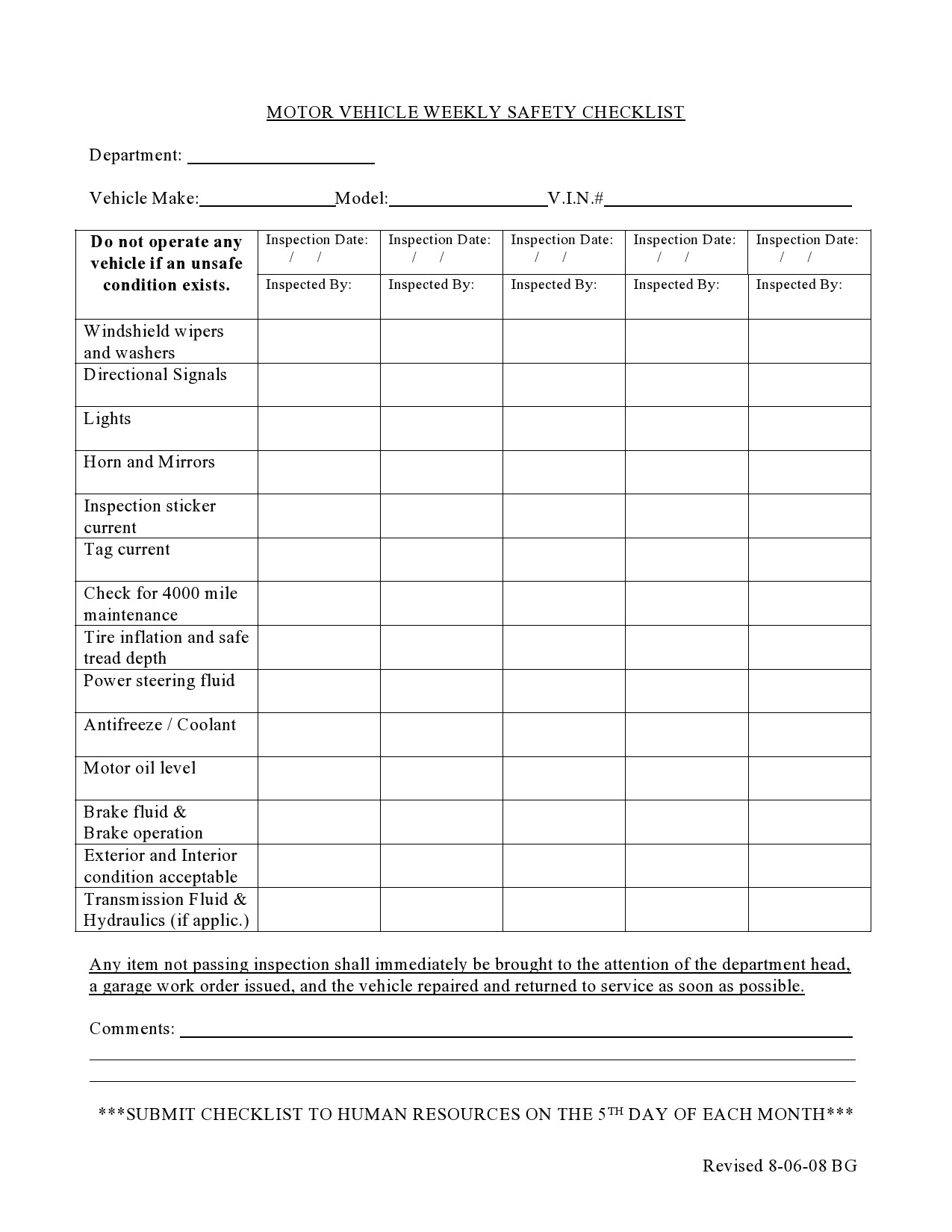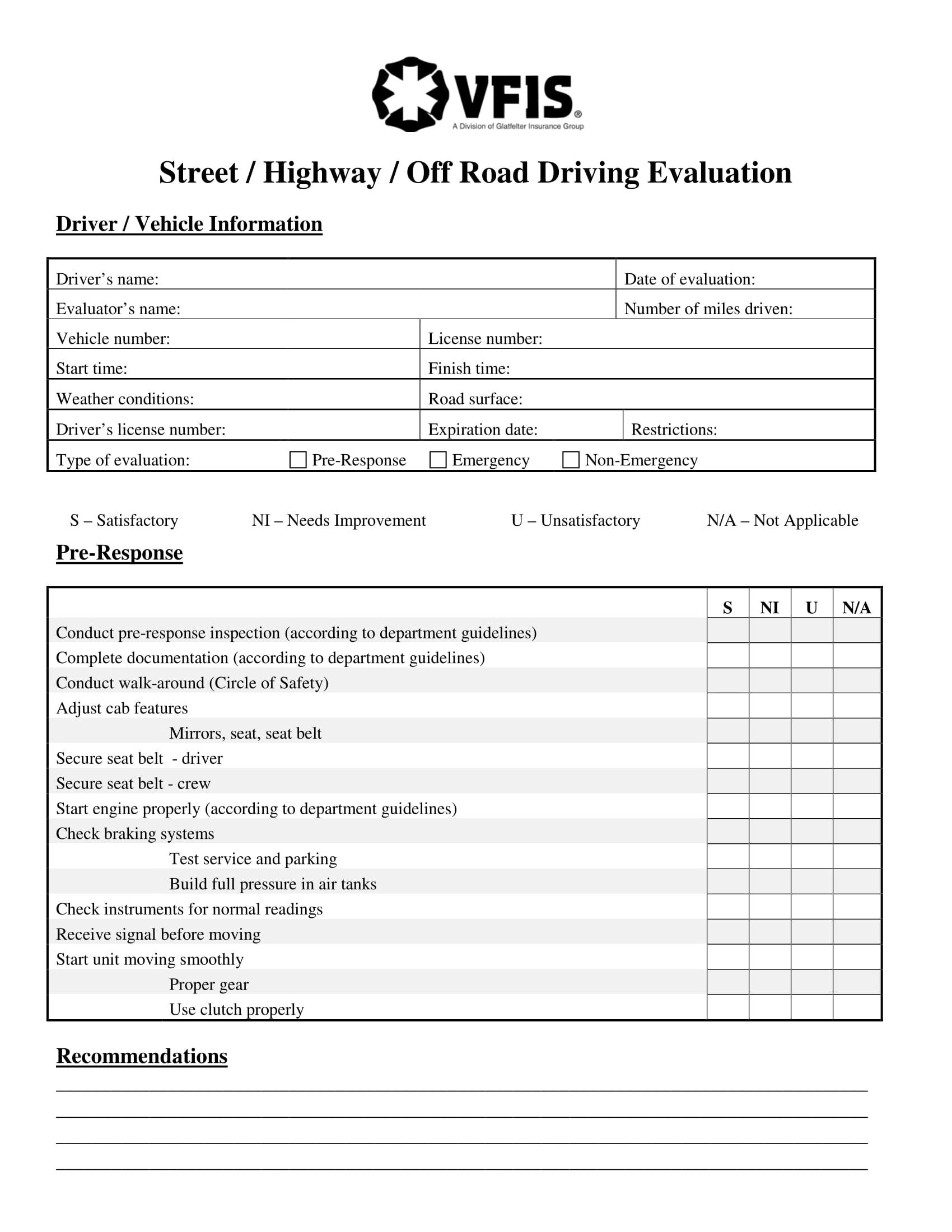
- #Practical driving test checklist how to#
- #Practical driving test checklist manual#
- #Practical driving test checklist license#
The backup test can vary by state, but you'll basically need to be able to put your car in reverse and drive safely in a straight line for 50 to 100 feet. You'll want to practice this skill to ensure you nail it during the test. You also should move to the center of the destination lane and your change should be smooth, not jerky. There should be a safe distance between you and all other vehicles. Maintaining the appropriate speed for the current traffic conditions is important, along with waiting for an adequate gap. Also, be sure to activate your turn signal before changing lanes and cancel it afterward. Be sure to do a proper traffic check by looking in the direction you're going, checking your side mirror, and looking over your shoulder at the blind spot on that side. The turn should then be smooth and controlled, slowing down to enter it and then accelerating though.

#Practical driving test checklist manual#
Manual vehicles will require you to change gears to maintain power and keep the gear engaged. The deceleration should feel smooth for you and the instructor. Also, be sure you are in the correct lane.Īs you approach the turn, you should slow down with a gradual release of the gas and depress of the brake. Then, signal at least 100 feet prior to making the turn but not too early to where it could confuse other drivers. Before making any turn, you should do a traffic check to look for vehicles, bicyclists, and pedestrians. Spend some time ensuring you know your car and all its functions well. Seat belts: Seat belts must work properly and be used.
#Practical driving test checklist how to#
Headlights: Headlights must be operational and you must know how to turn them on and off. Hazard lights: Hazard lights must be working and you must know how to turn them on and off. Windshield wipers: Windshield wipers must be working, and you must be able to control them.ĭefroster: Know where the defroster is and how to use it. Parking brake: You must be able to set and release the parking brake.Īrm signals: You need to know the arm signals for left turn, right turn, slow down, and stop. Tires: Your tires may need a minimum amount of tread and shouldn't be bald. Turn signals: All four turn signals must work.īrake lights: Both brake lights must work. If your vehicle doesn't operate properly or you don't know how to work it, it could result in a fail. Pre-Drive Checklist Itemsīefore you begin the actual driving test, you will typically need to demonstrate that you know how to operate the many functions of your vehicle (which are important for safe driving). Here are five of the key skills to practice before your driving test. What Should You Practice Before Your Driving Test? But what should you be practicing? Here are five key things.
#Practical driving test checklist license#

Signaling the proper distance before turning.

Turning your head and looking back before changing lanes.

Following other vehicles at a safe distance.Changing your speed to meet the number and speed of other vehicles, pedestrians, road and weather conditions, construction, amount of light, and the distance you can see ahead.Using the gas pedal, brake, steering wheel, and other controls correctly.Leaving the curb: do you signal and wait until it's safe to re-enter traffic Below is a list of what we will test you on once you're behind the wheel:Ģ.


 0 kommentar(er)
0 kommentar(er)
